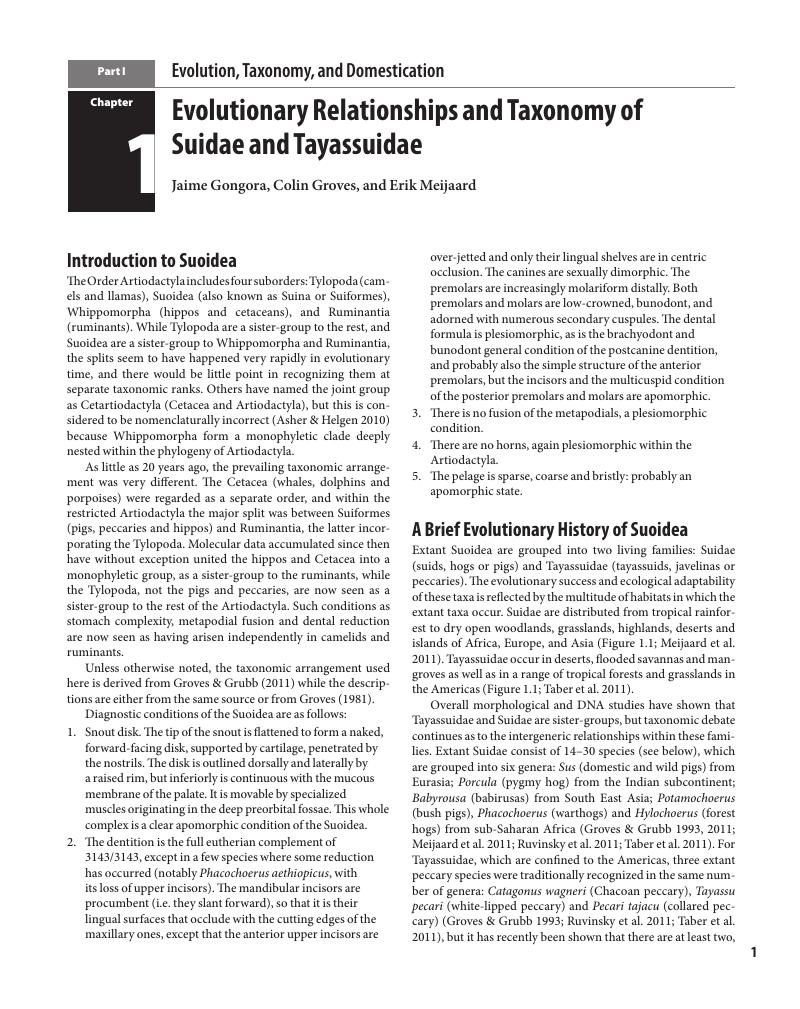Book contents
- Ecology, Conservation and Management of Wild Pigs and Peccaries
- Ecology, Conservation and Management of Wild Pigs and Peccaries
- Copyright page
- Dedication
- Contents
- Contributors
- Foreword
- Acknowledgements
- Introduction
- Part I Evolution, Taxonomy, and Domestication
- 1 Evolutionary Relationships and Taxonomy of Suidae and Tayassuidae
- 2 Postcranial Skeletal Morphology in Living and Fossil African Suidae
- 3 Diet and Ecology of Extant and Fossil Wild Pigs
- 4 A History of Pig Domestication: New Ways of Exploring a Complex Process
- 5 Space, Time and Pig
- Part II Species Accounts
- Part III Conservation and Management
- Index
- References
1 - Evolutionary Relationships and Taxonomy of Suidae and Tayassuidae
from Part I - Evolution, Taxonomy, and Domestication
Published online by Cambridge University Press: 21 November 2017
- Ecology, Conservation and Management of Wild Pigs and Peccaries
- Ecology, Conservation and Management of Wild Pigs and Peccaries
- Copyright page
- Dedication
- Contents
- Contributors
- Foreword
- Acknowledgements
- Introduction
- Part I Evolution, Taxonomy, and Domestication
- 1 Evolutionary Relationships and Taxonomy of Suidae and Tayassuidae
- 2 Postcranial Skeletal Morphology in Living and Fossil African Suidae
- 3 Diet and Ecology of Extant and Fossil Wild Pigs
- 4 A History of Pig Domestication: New Ways of Exploring a Complex Process
- 5 Space, Time and Pig
- Part II Species Accounts
- Part III Conservation and Management
- Index
- References
Summary

- Type
- Chapter
- Information
- Publisher: Cambridge University PressPrint publication year: 2017
References
- 4
- Cited by



